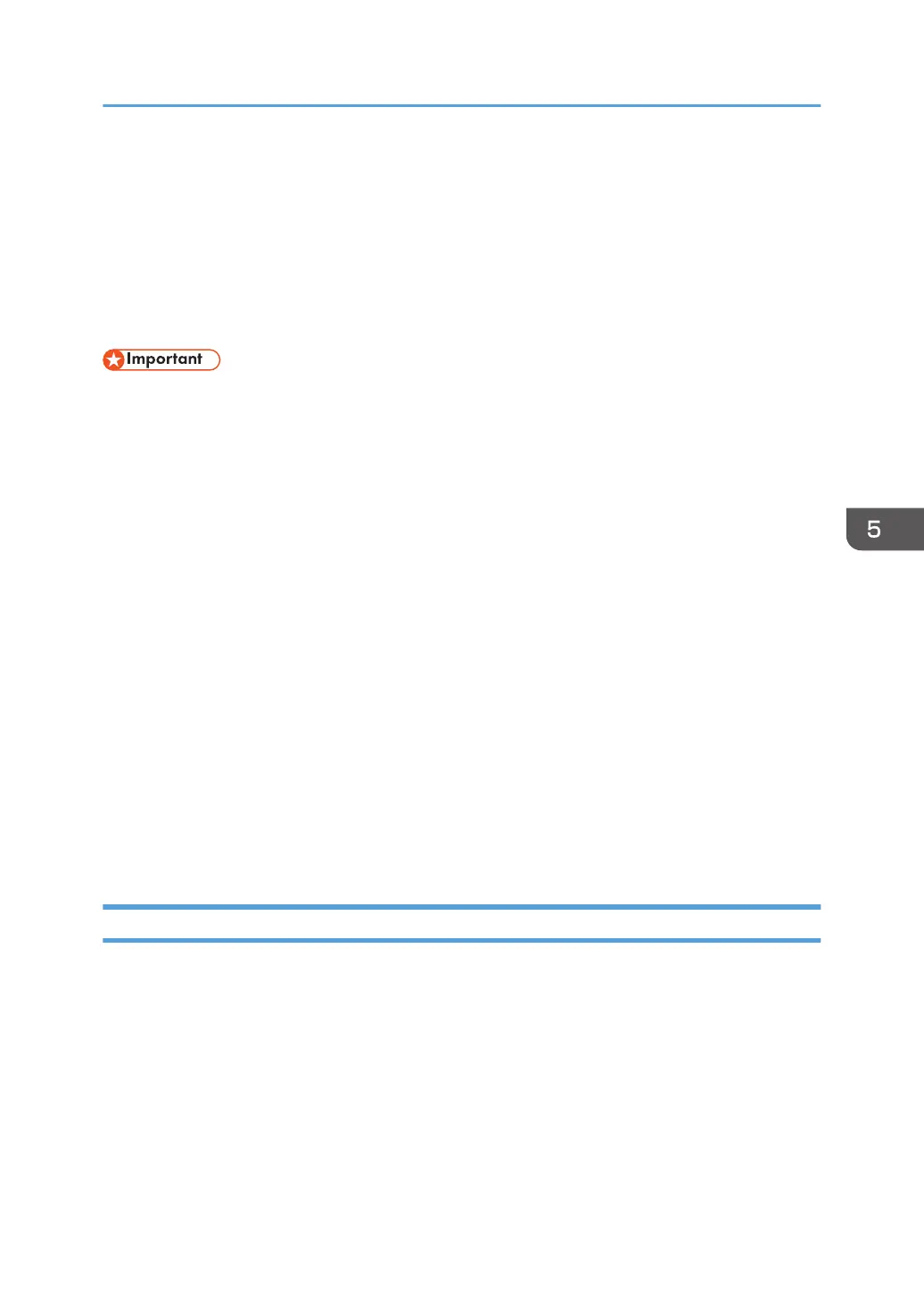Configuring IPsec
For communication security, this printer supports IPsec. IPsec transmits secure data packets at the IP
protocol level using the shared key encryption method, where both the sender and receiver retain the
same key. This printer uses automatic key exchange to configure the pre-shared key for both parties.
Using the auto exchange setting, you can renew the shared key exchange settings within a specified
validity period, and achieve higher transmission security.
• When "Inactive" is specified for "Exclude HTTPS Communication", access to Web Image Monitor
can be lost if the key settings are improperly configured. In order to prevent this, you can specify
IPsec to exclude HTTPS transmission by selecting "Active". When you want to include HTTPS
transmission, we recommend that you select "Inactive" for "Exclude HTTPS Communication" after
confirming that IPsec is properly configured. When "Active" is selected for "Exclude HTTPS
Communication", even though HTTPS transmission is not targeted by IPsec, Web Image Monitor
might become unusable when TCP is targeted by IPsec from the computer side. If you cannot
access Web Image Monitor due to IPsec configuration problems, disable IPsec in System Settings
on the control panel, and then access Web Image Monitor. For details about enabling and
disabling IPsec using the control panel, see:
•
"Configuring Printer Settings from the [Menu] key", Operating Instructions. (for SP 4510DN)
• "Configuring Printer Settings from the [User Tools] key", Operating Instructions. (for SP
4520DN)
• IPsec is not applied to data obtained through DHCP, DNS, or WINS.
• IPsec for IPv4 is supported by Windows XP SP2 and Windows Server 2003/2003 R2. IPsec for
both IPv4 and IPv6 is supported by Windows Vista/7/8/8.1, Windows Server 2008/2008
R2/2012/2012 R2, Mac OS X 10.4.8 and later, Red Hat Enterprise Linux WS 4.0 and Solaris
10. However, some setting items are not supported depending on the operating system. Make sure
the IPsec settings you specify are consistent with the operating system's IPsec settings.
Encryption and Authentication by IPsec
IPsec consists of two main functions: the encryption function, which ensures the confidentiality of data,
and the authentication function, which verifies the sender of the data and the data's integrity. This
printer's IPsec function supports two security protocols: the ESP protocol, which enables both of the IPsec
functions at the same time, and the AH protocol, which enables only the authentication function.
ESP protocol
The ESP protocol provides secure transmission through both encryption and authentication. This
protocol does not provide header authentication.
Configuring IPsec
127
